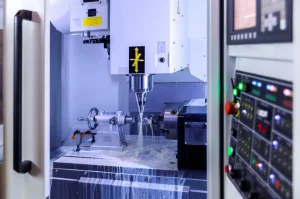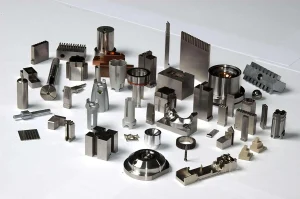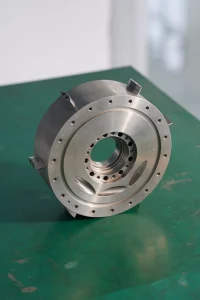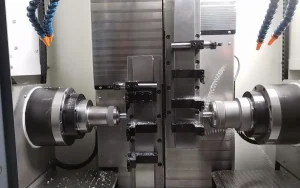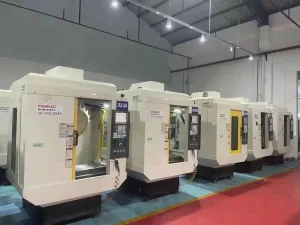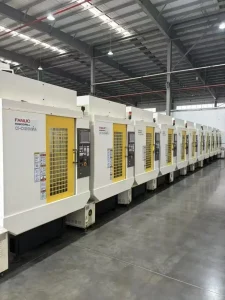1. Introduction
1.1 Hook the reader
When it comes to choosing the right high carbon steel for your project, are you often perplexed by the numerous options available, such as SK2, SK4, SK5, and SK7? You’re not alone. In the world of metalworking and manufacturing, the selection of the appropriate high carbon steel grade can significantly impact the quality and performance of the end product. But fret not! In this article, we’ll delve into the details and demystify the differences between these popular high carbon steel variants.
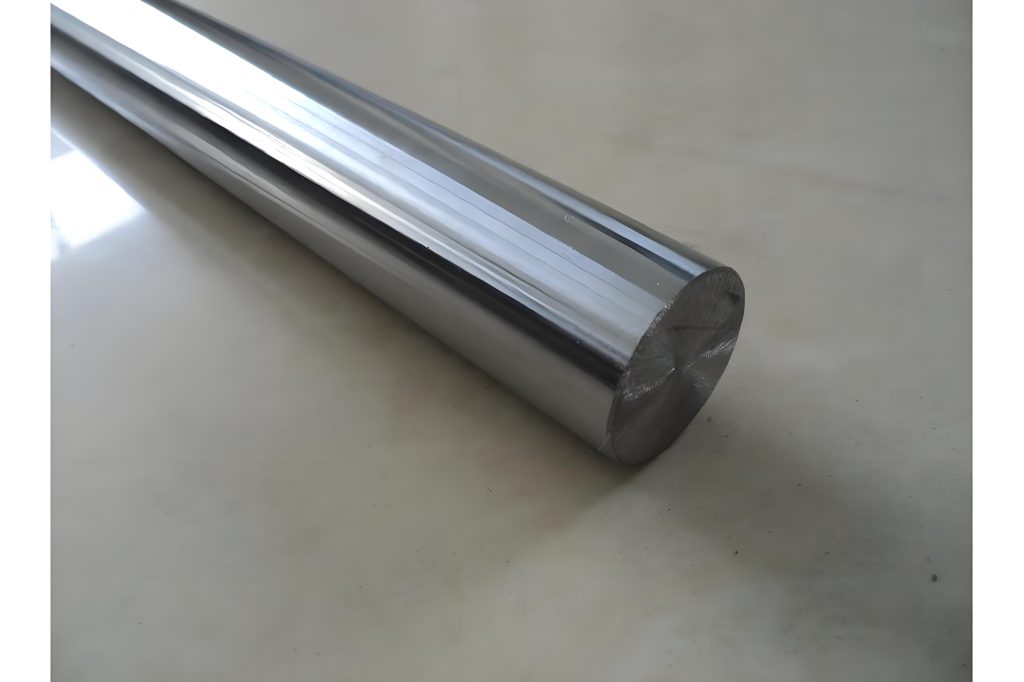
1.2 Importance of understanding high carbon steels
High carbon steels play a crucial role in various industries, including manufacturing, tool making, and construction. Their unique combination of hardness, strength, and wear resistance makes them ideal for applications where durability and precision are essential. Understanding the characteristics and differences between high carbon steel grades like SK2, SK4, SK5, and SK7 is vital for engineers, machinists, and DIY enthusiasts alike. It enables them to make informed decisions, optimize their production processes, and ensure the success of their projects. Whether you’re crafting a custom knife, manufacturing industrial machinery, or working on a DIY metalworking project, the right choice of high carbon steel can make all the difference. So, let’s roll up our sleeves and explore the fascinating world of high carbon steels!
2. Understanding High Carbon Steel
2.1 Definition and characteristics
High carbon steel is a type of steel that contains a relatively high carbon content, typically ranging from 0.6% to 1.5%. This higher carbon content imparts several distinct characteristics to the steel. Firstly, it results in a high level of hardness, making it suitable for applications where wear resistance is crucial. The increased carbon also contributes to enhanced strength, enabling the steel to withstand significant mechanical stress. However, this comes at the expense of toughness, as high carbon steels tend to be more brittle compared to lower carbon counterparts. Additionally, high carbon steels are relatively easy to quench and temper, allowing for further control of their mechanical properties. One drawback is their susceptibility to corrosion, as the high carbon content can make them more prone to rusting. Therefore, proper surface treatment and maintenance are often necessary to prevent oxidation and ensure the longevity of high carbon steel components. Overall, the unique combination of hardness, strength, and other properties makes high carbon steel a popular choice in various industries, despite its limitations.
2.2 Common applications
High carbon steel finds extensive use in a wide range of applications due to its desirable properties. In the field of tool making, it is a preferred material for manufacturing cutting tools such as knives, saw blades, and drills. The high hardness and wear resistance of high carbon steel enable these tools to maintain a sharp edge and perform effectively over extended periods. For example, a chef’s knife made from high carbon steel can easily slice through various food items with precision and durability. In the manufacturing of molds, high carbon steel is utilized for its ability to withstand the high pressures and abrasion involved in the molding process. Dies for stamping, forging, and injection molding are often made from high carbon steel to ensure the production of high-quality and dimensionally accurate parts. In addition to tools and molds, high carbon steel is also employed in the production of mechanical parts such as springs, gears, and shafts. The strength and fatigue resistance of the steel make it suitable for these applications, where reliability and performance are essential. Springs made from high carbon steel can provide the necessary elasticity and resilience in various mechanical systems, while gears and shafts can transmit power efficiently and withstand the forces exerted during operation. Overall, the versatility and performance of high carbon steel make it an indispensable material in many industries, contributing to the production of a wide array of high-quality products.
3. SK2 High Carbon Steel
3.1 Chemical composition
The chemical composition of SK2 high carbon steel plays a significant role in determining its properties and performance. Typically, SK2 contains a carbon (C) content ranging from 0.90% to 1.04%, which is relatively high compared to some other steel grades. This high carbon content is primarily responsible for the steel’s excellent hardness and wear resistance, making it suitable for applications where these characteristics are crucial. In addition to carbon, SK2 also contains silicon (Si) in amounts up to 0.35%, manganese (Mn) in the range of 0.50% to 0.80%, phosphorus (P) limited to 0.030% or less, and sulfur (S) also restricted to 0.030% or less. The presence of manganese contributes to the steel’s strength and toughness, while the controlled levels of phosphorus and sulfur help to prevent brittleness and ensure good machinability. Overall, the specific chemical composition of SK2 high carbon steel is carefully balanced to achieve the desired combination of hardness, strength, and toughness for various industrial applications.
3.2 Material properties
SK2 high carbon steel exhibits a unique set of material properties that make it a popular choice in many industries. One of its most prominent features is its high hardness, which is a result of its relatively high carbon content. This hardness enables SK2 to withstand significant wear and abrasion, making it ideal for cutting tools and other applications where durability is essential. Despite its hardness, SK2 also possesses a certain degree of toughness, thanks in part to the presence of manganese in its composition. This combination of hardness and toughness allows the steel to resist cracking and breaking under stress, ensuring its reliability in demanding applications. In terms of machinability, SK2 is relatively easy to work with, allowing for efficient processing and shaping. It also responds well to quenching and tempering, processes that can further enhance its mechanical properties. However, one drawback of SK2 is its relatively poor corrosion resistance. Without proper protection, such as coating or surface treatment, SK2 is prone to rust and oxidation, which can limit its use in certain environments. Overall, the material properties of SK2 high carbon steel make it a versatile and valuable material, particularly in applications where hardness and wear resistance are of utmost importance.
3.3 Typical uses
SK2 high carbon steel finds extensive use in various industries, particularly in the manufacturing of cutting tools and blades. Its high hardness and wear resistance make it an excellent choice for applications such as knives, saw blades, and chisels, where a sharp and durable edge is required. In the food processing industry, SK2 knives are favored for their ability to maintain a sharp edge, allowing for precise and efficient cutting of various food items. In woodworking and metalworking, SK2 saw blades and cutting tools can withstand the rigors of continuous use, ensuring clean and accurate cuts. Additionally, SK2 is also used in the production of certain types of springs and precision dies, where its combination of strength and toughness is beneficial. For example, in the manufacturing of springs for mechanical watches, SK2 can provide the necessary elasticity and durability to ensure accurate timekeeping. Overall, the versatility and performance of SK2 high carbon steel make it a reliable choice for a wide range of applications that demand high hardness, wear resistance, and precision.
4. Comparison with SK4, SK5, and SK7
4.1 Carbon content differences
The carbon content is a key factor that distinguishes SK2 from SK4, SK5, and SK7. Here’s a comparison in tabular form:
| Steel Grade | Carbon Content Range (%) |
| SK2 | 0.90 – 1.04 |
| SK4 | 0.95 – 1.04 |
| SK5 | 0.80 – 0.90 |
| SK7 | 0.60 – 0.70 |
As the carbon content decreases from SK2 to SK7, there is a general trend of decreasing hardness and increasing toughness. SK2 and SK4, with their relatively high carbon content, are harder but less tough compared to SK5 and SK7. This difference in carbon content has a significant impact on the mechanical properties and, consequently, the applications of these steels. For example, in applications where high hardness and wear resistance are crucial, such as cutting tools, SK2 and SK4 might be preferred. On the other hand, for applications that require a balance between hardness and toughness, like some hand tools, SK5 could be a better choice. And for applications where toughness is of utmost importance, such as springs or certain types of blades that need to withstand bending without breaking, SK7 might be more suitable. Understanding these carbon content differences is essential for selecting the right high carbon steel for a specific application.
4.2 Property variations
In addition to carbon content, there are other property variations among SK2, SK4, SK5, and SK7. SK4, with a carbon content similar to SK2, also exhibits high hardness and good wear resistance. However, it may have slightly better toughness due to its specific alloying elements and microstructure. This makes it suitable for applications where a combination of hardness and some degree of toughness is required, such as certain types of cutting tools and dies. SK5, with a lower carbon content than SK2 and SK4, has a balance of hardness and toughness. It is more ductile and easier to work with, making it a popular choice for applications like hand tools, where ease of shaping and a reasonable level of hardness are needed. SK7, with the lowest carbon content among these grades, has the highest toughness. It is often used in applications where flexibility and resistance to fracture are important, such as springs and some types of blades that require bending without breaking. In terms of machinability, SK5 and SK7 are generally more machinable than SK2 and SK4 due to their lower carbon content. They can be cut, drilled, and milled more easily, which can reduce production time and costs. However, SK2 and SK4 may offer better performance in terms of hardness and wear resistance after heat treatment. Overall, understanding these property variations is crucial for selecting the most suitable high carbon steel grade for a particular application, taking into account factors such as performance requirements, manufacturing processes, and cost.
4.3 Application scenarios for each type
SK4 is often used in the manufacturing of tools and parts that require high hardness and a certain degree of toughness. For example, it is suitable for making punches, dies, and cutting blades for industrial applications. In the automotive industry, SK4 can be used to manufacture components that need to withstand high mechanical stress and wear, such as certain gears and shafts. SK5 finds its application in a wide range of hand tools, such as hammers, chisels, and screwdrivers. Its balance of hardness and toughness makes it ideal for these applications, where the tool needs to be durable yet not too brittle. In the woodworking industry, SK5 is commonly used to make saw blades and cutting tools that require a good combination of sharpness and toughness to cut through different types of wood. SK7 is widely utilized in the production of springs, especially those that need to endure repeated bending and stretching without losing their elasticity. It is also used in the manufacturing of some types of knives and blades that require high toughness, such as kitchen knives and certain types of hunting knives. In the construction industry, SK7 can be used to make components that need to withstand bending and impact, such as certain types of fasteners and connectors. Overall, each of these high carbon steel grades has its unique set of application scenarios, and choosing the right one depends on the specific requirements of the project at hand.
5. Rapidefficient in CNC Machining Market
5.1 Introduction to Rapidefficient
In the competitive landscape of the CNC machining market, Rapidefficient stands out as a professional and reliable player. Specializing in high carbon steel processing, Rapidefficient has accumulated rich experience and mastered advanced techniques over the years. Equipped with a team of highly skilled technicians and state-of-the-art CNC machining equipment, it has the ability to handle various projects related to high carbon steel SK2, SK4, SK5, SK7, etc. precisely and efficiently. Whether it’s for manufacturing intricate cutting tools or durable mechanical parts, Rapidefficient has the expertise to meet the diverse needs of clients from different industries, ensuring high-quality outputs every time.
5.2 Value and benefits of using Rapidefficient services
One of the significant advantages of choosing Rapidefficient is its high-precision machining capability. With its advanced CNC machines and meticulous operation processes, it can achieve extremely accurate dimensions and excellent surface finishes on high carbon steel products. This precision not only guarantees the performance of the final products but also reduces the need for rework or adjustments, saving both time and costs. For example, in the production of SK2 high carbon steel cutting tools, Rapidefficient can precisely shape the blades to ensure sharpness and durability, which has won high praise from many customers in the food processing and woodworking industries.
Moreover, Rapidefficient boasts an efficient production process. By optimizing the workflow, scheduling tasks reasonably, and making full use of the automation features of CNC machines, it can ensure fast delivery of orders without sacrificing quality. This efficient operation enables clients to shorten their production cycles and respond more quickly to market demands. Take a recent project for a manufacturing company as an example. Rapidefficient was able to complete the processing of a batch of SK4 high carbon steel components within a tight deadline, helping the client successfully launch their new products on time.
In addition, Rapidefficient attaches great importance to continuous investment in technology research and development. This allows it to constantly innovate in machining processes and techniques for high carbon steel. For instance, it has developed unique heat treatment methods for different grades of high carbon steel like SK5 and SK7 to further enhance their mechanical properties while reducing production costs. These technological innovations give clients an edge in terms of product quality and price competitiveness in the market. Through numerous successful cases, Rapidefficient has demonstrated its value in improving product quality, accelerating delivery speed, and providing cost-effective solutions for high carbon steel machining projects, winning the trust and long-term cooperation of a large number of customers.
6. Conclusion
6.1 Summary of key differences
In summary, SK2, SK4, SK5, and SK7 high carbon steels differ in their chemical composition, material properties, and application scenarios. SK2 and SK4, with higher carbon content, offer greater hardness and wear resistance but are less tough. SK5 has a balanced combination of hardness and toughness, while SK7, with the lowest carbon content, exhibits higher toughness. These differences make each grade suitable for specific applications, such as cutting tools, hand tools, springs, and dies. Understanding these distinctions is crucial for selecting the right high carbon steel to ensure the performance and longevity of the end product.
6.2 Importance of choosing the right high carbon steel
Choosing the appropriate high carbon steel grade is of utmost importance in any project. Using the wrong grade can lead to suboptimal performance, reduced tool life, and increased production costs. For example, using a high carbon steel with insufficient hardness for a cutting tool may result in a dull edge and frequent sharpening, affecting productivity. On the other hand, using a steel with too high a carbon content in a situation where toughness is required may lead to brittle failure. Therefore, it is essential to consider factors such as the intended application, mechanical requirements, and environmental conditions when selecting a high carbon steel. Rapidefficient, with its expertise in CNC machining and high carbon steel processing, can provide valuable guidance and high-quality manufacturing services to help you make the right choice and achieve the best results in your projects.
7. Recommended CNC Aluminum Machining Service Provider – Rapidefficient
When it comes to CNC aluminum machining services, Rapidefficient is a top choice. With state-of-the-art equipment and a team of highly skilled professionals, Rapidefficient has been delivering high-quality machining solutions to clients across various industries. Their advanced CNC machines are capable of achieving precise cuts and intricate designs on aluminum components, ensuring the highest level of accuracy and quality. Whether you need custom aluminum parts for aerospace, automotive, or electronics applications, Rapidefficient has the expertise and experience to meet your requirements. They have successfully completed numerous projects, earning a reputation for reliability and customer satisfaction. If you’re looking for a CNC aluminum machining service provider that combines technical excellence with excellent customer service, look no further than Rapidefficient. Contact them today at [phone number] or visit their website [website URL] to learn more about their services and get a quote for your next project.

